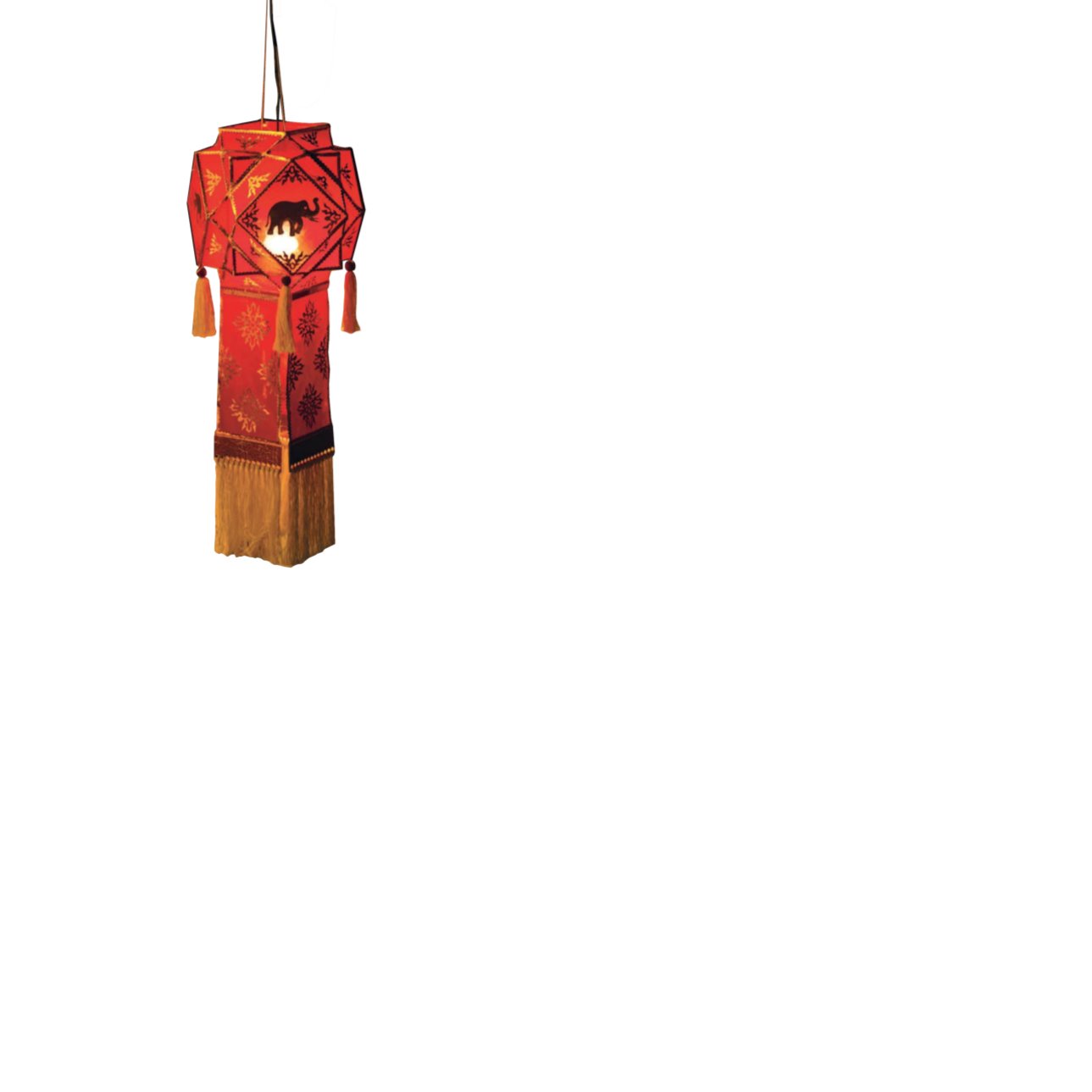

Science and Art Thai Craftsmanship
|
121
Lanna Floating
Lantern
The Fine Art of Offerings
Khom Lanna (Lanna lantern) is traditional craftwork of Lanna people
since the ancient times. Its beauty is at the decorative stencils which are all
meaningful and sacred. The purpose of making lanterns is to worship Buddha
or sacrifice to a respected person. Lanna lantern also depicts the society of
Thai Lanna people who believe in Buddhism and commonly respect spirit.
The creativity of the lantern craftsmen is full of exquisiteness and determination
to work with their full capabilities.
Based on the Lord Buddha painting dated in the reign of King Tilokaraj
of Lanna 500 years ago, discovered by Prof. Silpa Bhirasri of the Department
of Fine Arts in 1958 at the Dok Ngoen Temple, in Chiangmai province,
it is assumed that the lantern-making is an ancient Thai craftsmanship. They
also have their own unique characteristics. The shape of Lanna lantern is
made of Hia bamboo frame. The bamboo, found only in the North, is cut into
a circle shape and covered with rice paper or hand-woven cotton, decorated
with stencil paper with the designs which have auspicious meaning, such
as Lai Dok Ka Kok and Lai Duang Tawan.
Lanna Lantern is often celebrated in the Yi Peng Festival, held on the
night of the 15
th
lunar month. The lantern is therefore called Khom Yi Peng
(or Yi Peng) and will be made one day earlier as Lanna people prepare to use
lanterns for lighting Phang Prathit or Phang Prathip (a small clay pot filled with
bees wax or oil to be placed in the lamp) and hang them on
“Khang Khom”
(a large bamboo pole) in front of temples. At the end of the pole there are
a stand and a pulley to move lanterns up.
Lanna lanterns are various in terms of styles and designs based on the
creative wisdom of each locality. The ancient lanterns which have been inherited
until now include Khom Rang Mot Som (red ant-nest shaped or Wheel of
the Dharma lantern); Khom Dao (star-shaped lantern), Khom Hai (jar-shaped
lantern), Khom Ngiao, Khom Krabok (cylinder-shaped lantern), Khom Hu Kratai
(rabbit’s ear-shaped lantern), Khom Dokbua (lotus-shaped lantern) Khom Yipun
(Japanese-style lantern), Khom Phat (Spinning silhouette lantern) and so on.
Khom Hu Kratai (rabbit’s ear-shaped lantern), Khom Dokbua (lotus-shaped
lantern) Khom Yipun (Japanese-style lantern), Khom Phat (Spinning silhouette
lantern) and so on.
“
In ancient times, lanterns were
used to produce lights instead of lamps.
But because oil was expensive, lanterns
were usually lit in the Royal Court and
the high-level government officials’
houses only. Lanna people more likely
lighted worshipping lanterns early in the
evening after listening to sermons. They
were praying to worship the five Buddhas
of the Bhadrakalpa which is present
Kalpa (Bhadra means excellent and Kalpa
is time measuring unit that indicate a very
long period of time or an eternity), namely
Kakusandha, Ko
ṇā
gamana, Kassapa,
Gautama, and Maitreya.
”


















